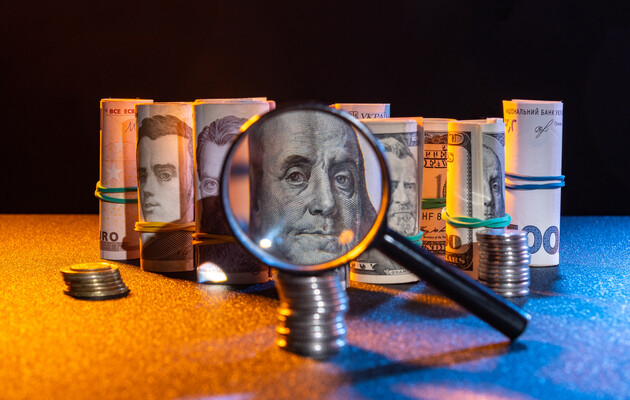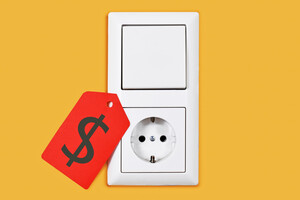Currency Exchange Rate For The Autumn
Of course, if we evaluate the data at least from the beginning of this year, then there is no reason to panic, because since January, the hryvnia exchange rate against the dollar has been steadily strengthening, and exchange rate fluctuations within 10% are generally considered a completely normal phenomenon. But honestly, apart from analysts, no one actually looks at those dynamics as people focus on current indicators and seasonality. Well, because the autumn months are traditionally a period of devaluation, and if the market starts to become feverish already in September, then everyone is worried. Will a dollar cost forty hryvnias? Let me explain this.
On the one hand, it is safe to say that the situation on the currency market of Ukraine remains stable. The NBU continues to perform interventions, the level of gold and foreign exchange reserves of Ukraine is at a record high – 41.7 billion dollars, the official rate is fixed, and the regulator is really trying to reduce the difference between the fixed and market rates.
On the other hand, globally, the situation is catastrophic, because usually currency is brought into the country by exporters and taken out by importers. Unfortunately, exports are significantly limited both logistically and due to other problems of manufacturers. Instead, imports are growing. In January-June 2023, the export of goods was 85.7%, and the import was 120.7% compared to January-June 2022. The main supplier of currency to the country is the Ministry of Finance, which receives financial assistance from Ukraine’s allies. So, of course, as long as this aid comes in regularly and the NBU keeps the exchange rate fixed, even with the country’s large trade deficit, by the end of 2023 the official hryvnia exchange rate can quite easily be maintained near the current values of 37.0-37.50 to the US dollar and 40 .00–41.50 per euro.
Current fluctuations, as well as seasonal growth in demand for currency, are possible, but as a trend they are unlikely to take hold. The situation is currently very comfortable. Even too much, at least that’s what the NBU thinks.
At the end of June, the financial regulator of Ukraine approved the Strategy for easing currency restrictions, transitioning to greater exchange rate flexibility, and returning to inflation targeting. These are not plans for this year, rather, for the next one, but actually this transition will be stressful and risky for the currency market.
Any economist will say that such measures in the conditions of the country’s trade deficit will increase the pressure on the exchange rate of the national currency. This means that the NBU’s expenses for currency interventions and maintaining exchange rate stability will increase significantly. Which, of course, increases the risk of devaluation of the hryvnia.
There is still money for this in Ukraine. However, in case of emergency, for example, non-rhythmic inflow of financial aid from partner countries, crisis events in the world economy, due to simultaneous braking in the Eurozone, China, the USA and other large economies, the NBU will have to either urgently return to flexible exchange rate formation with the inevitable weakening of the hryvnia, or manually “weaken” the fixed rate.
Currently, the NBU is full of restrained optimism and is slowly implementing the planned strategy. So, on August 28, the National Bank of Ukraine for the first time since the beginning of the war allowed citizens to buy foreign currency online (50 thousand UAH per month in one bank). In addition, the regulator increased the limits for buying currency when placing it on deposits to UAH 200,000.
The foreign exchange market is talking about the fact that this was done in order to prevent a significant expansion of the difference between the non-cash exchange rate and the cash exchange rate. As confirmation, they provide the fact of the strengthening of the hryvnia cash rate immediately after the announcement of the NBU’s measures to ease currency restrictions.
However, in reality, the slight strengthening of the hryvnia may be a local emotional reaction of the market. And whether this trend will take hold will become clear only after a few weeks of September, when it will be clear whether the seasonal weakening of the hryvnia resumes or whether the National Bank of Ukraine really stopped it.
The first option seems more likely, because the demand for cash currency will still remain very high due to low limits on the purchase of non-cash currency. Therefore, even if the crisis weakening of the official rate of the hryvnia does not happen this fall, the cash currency can continue to rise in price to 39.00-40.00 per US dollar and 42.00-43.00 per euro.
So, shall we buy currency? There is no universal strategy for the placement of savings and there cannot be. It is always determined individually for each person. The investment horizon, risk tolerance, financial goals and other needs of a particular investor are important here.
Without these parameters, we can only talk about some basic tips. They now include two main principles, first and foremost a broader diversification and an emphasis on defensive fixed income instruments.
Wider diversification implies that now the currency basket of savings should be more diverse and equal in shares. It is necessary to add at least two more instruments to dollars and hryvnias, for example, the euro and gold.
The American currency, due to the decrease in the investment rating of the USA, as well as the increasing problems with servicing the national debt, currently has less exchange rate stability. Therefore, with the help of adding euros and gold, as well as equalizing the proportions of all four instruments in the portfolio (25% each), you can protect your savings from exchange rate risks.
Further, savings in dollars, euros and hryvnias should be placed in assets with a fixed return. These should be short-term government bonds and short-term bank deposits with a period of no more than 6–12 months.
Short-termism should provide better protection against market fluctuations. In addition, it should ensure quick access to funds without loss of interest in the event of a crisis in the prices of other assets such as real estate, shares, corporate bonds, and others. In any case, it should always be remembered that in a crisis (and, despite the general calm, we are still experiencing it), keeping all savings in one basket means only to multiplying the already significant risks.
Read this article by Maksym Oryshchak in russian and Ukrainian
Please select it with the mouse and press Ctrl+Enter or Submit a bug














 Login with Google
Login with Google